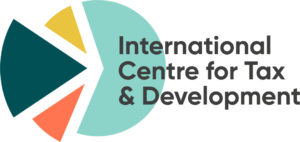Many African tax authorities have weak capacity to raise revenue. From 1990 to 2020, sub-Saharan African countries on average collected only about 12%-15% of GDP as taxes, a much lower share than the 33.5% in OECD economies.
For countries that have limited information about taxpayers, constrained resources and informal economies, it can be difficult to collect revenue. What’s more, African tax administrations tend to rely on manual filing and payment of taxes. In-person interactions between taxpayers and tax officials are common, creating opportunities for collusion when paying taxes. African taxpayers also experience higher compliance costs than similar regions when navigating opaque tax systems.
Kenya has faced many of these challenges. To streamline processes and make them more transparent, the country has in the last decade begun to digitise public services like tax collection. Digitisation also aims to enhance taxpayer identification and monitoring capacity, and lower the costs of compliance for taxpayers.
In the latest policy reforms, the country plans to introduce digital identity documents for all Kenyans by February 2024. A digital ID system, e-ID, uses digital technology across the entire ID lifecycle: capturing, validating, storing and transferring data.
In Kenya, each citizen will receive a unique personal identifier. It will be crucial throughout a child’s journey in school. From the age of 18, the identifier will become an official national identity number for access to the full range of public services.
At the same time, Kenya is on course to eliminate cash transactions for all government services. These services include business registration, passport services, and land and property services in 2023.
Combining mandatory electronic tax payment and e-IDs could greatly improve revenue collection and efficiency, and cut taxpayers’ compliance costs.
Electronic filing of taxes has been mandatory since 2016 to collect taxes on employment, business and rental incomes. The system supports a wide range of tasks, from registrations to refunds. Taxpayers can still pay taxes using cash, however, by visiting authorised banks or Kenya Revenue Authority service centres. Universal e-payment of taxes is expected to change all that.
We have between us years of research in governance, public finance and taxation conducted in African countries. Our view is that a number of challenges and constraints need to be considered to unlock the benefits of a fully digitised tax administration, not just in Kenya but elsewhere.
Technology and taxation
Technology can strengthen tax administration in at least three ways:
1. Identifying the tax base: using third-party information, technology can create comprehensive databases of taxable subjects, making it easier to determine what tax is payable. Kenya’s digital ID would improve the way government databases work together and the revenue collector’s “view” of taxpayers.
2. Enforcing compliance: technology can automatically check what a taxpayer reports against other data sources. Efficient e-filing platforms can automatically identify missed or late declarations. The unique identifiers provided by an ID scheme make this work.
3. Facilitating compliance: tax e-filing and e-payment can help reduce compliance costs. They improve record-keeping and eliminate travel, queuing and capricious manual practices from tax officials. And the biographic information in the digital ID database helps with tax registration.
But evidence suggests that important preconditions must be met for IT-based tax reforms to succeed.
In the case of Kenya, accessibility and taxpayer costs should be policy priorities when mandating e-payment. A recent study on tax e-filing, for instance, revealed that not everyone had access to devices necessary for e-filing, and there were language barriers. These practical challenges typically pushed taxpayers to use intermediaries: they went back to a manual, in-person experience.
These shortcomings increase the risk of errors, misuse of personal data and bribery. Less tech-savvy taxpayers might be vulnerable. As filing levels are already poor, e-payment solutions should make it easier, not harder, to comply.
Lessons from other countries
E-services help improve filing accuracy and timeliness, but one lesson from our research is that this does not always translate into higher tax revenue.
Positive impacts can be short-lived, as adoption of digital merchant payments in Rwanda indicates. Here, taxpayers quickly reverted to pre-adoption compliance levels. Similarly, in Ethiopia, the adoption of point-of-sale electronic tax devices increased revenues, but gains were offset by taxpayers inflating other, less verifiable margins.
Making digital systems compulsory, as in Rwanda and Eswatini, does not necessarily lead to people using them. Digital divides emerge between adopters and non-adopters. The less equipped, more marginalised and less tech-savvy taxpayers fail to take up the tools.
Our research also shows that digital ID schemes must meet several conditions for tax administrations to benefit meaningfully. Digital IDs must be universally adopted. Identification data should be accurate and up to date. Strong cooperation across government entities is necessary to allow data sharing, as we’ve seen in our ongoing work in Uganda and Ghana.
Which way for Kenya?
The government and tax administration must be cautious about digital IDs. Poor-quality and outdated data from e-ID could be damaging to the Kenya Revenue Authority’s functions. The institutions involved should promote a culture of information updating in the population. They should encourage citizens to share valid information with the government.
It’s vital to establish a robust data protection framework and digital trust, especially after the failure of the country’s National Integrated Identity Management System. Citizens need clarity on data usage and how the new project differs from the previous one if they are to trust the digital ID system.
Similarly, the government and revenue authority must support citizens to move towards fully digitised tax payments. They can do this by creating systems that are simple and secure, and by providing assistance and training.
The development of e-government must happen along with a framework for data protection and cyber-security response infrastructure. Besides threatening citizens’ data privacy and security, system failures – like the one that recently disrupted access to multiple services on the e-Citizen portal – have extremely serious repercussions on citizens’ trust in government and technology.
Nimmo Elmi (PhD) contributed to some of the research on which this article is based.
This article was originally published by The Conversation.




